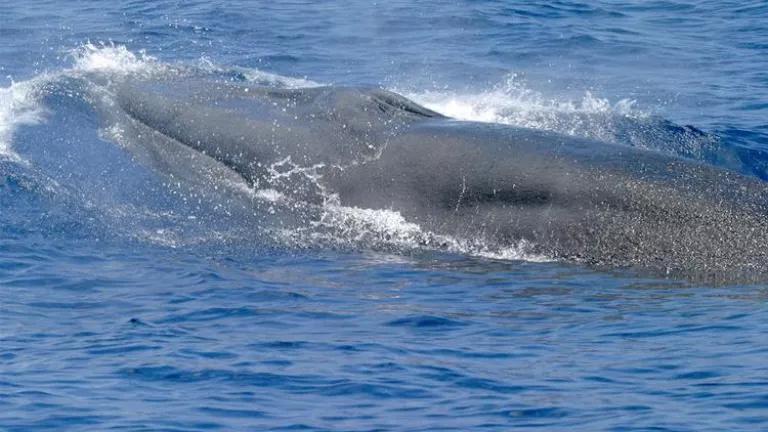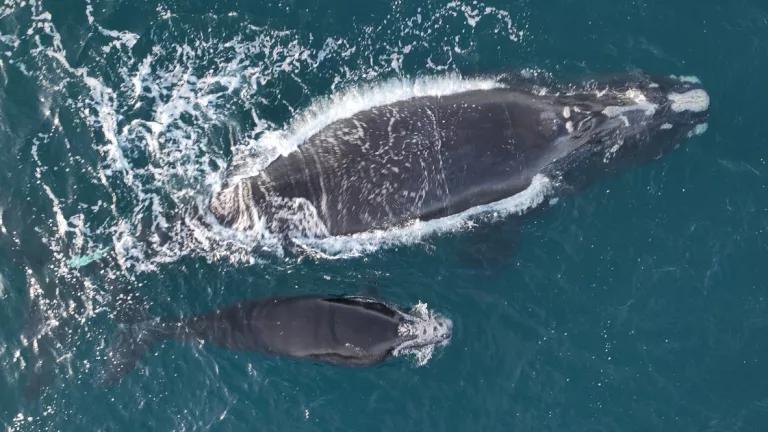Marine Life: The Casualties of Offshore Drilling
The Biden Administration can protect marine ecosystems, and the Alaska and Gulf communities that rely on them, by offering no new offshore oil and gas leases.

Rice's/Gulf of Mexico Whale
NOAA Fisheries
Oil and gas production in our ocean has already proven to have destructive impacts on marine ecosystems. From exploration to combustion, fossil fuels devastate some of our most awe-inspiring environments. The BP Deepwater Horizon explosion was the worst environmental disaster in U.S. history, and over a decade later it is still impacting Gulf communities and marine ecosystems. Every offshore oil spill began with a lease sale, and the Biden administration could offer more offshore oil and gas lease sales in its 5-Year Program.
This fall, the Biden administration must decide whether to protect the climate and marine ecosystems in the Gulf and Alaska, or auction more of our ocean to industry. The consequences of more offshore drilling in our public waters would be dire for wildlife.
Oil and Gas Impacts to Whales
The Gulf of Mexico whale (also known as Rice’s whale) is the only great whale species wholly endemic to the United States, and it is careening toward extinction in large part because of offshore drilling in the Gulf of Mexico. Despite the fact that the BP Deepwater Horizon drilling platform was outside the known habitat range of the Gulf whale, the spill is estimated to have killed 17% of the whales outright and to have caused reproductive failure and other misery in much of the rest of the population. There are now only about 50 of these critically endangered whales in existence. A unique part of the region’s—and the country’s—natural history, the Gulf whale could be silenced forever if the Biden administration fulfills industry demands for more drilling.
And in Alaska, the Cook Inlet beluga, whose population has fallen from over 1,400 to fewer than 300 over the past 50 years and continues to decline, is deeply threatened by the potential for new leasing in its restricted habitat. The population, important to Native Alaskan communities, is one of the few North American beluga populations to live outside of the Arctic Circle.

Cook Inlet Beluga Whale
Marine Mammal Commission
All stages of oil and gas development pose a threat to whales. Before drilling can even begin, seismic blasting in the exploration process disrupts whale feeding, breeding, and communication. High-energy seismic noise can also physically injure whales, causing permanent hearing loss. Increased vessel traffic during exploration and drilling also harms whales, both by raising underwater noise and by increasing the risk of vessel strikes, which can cause serious injury or death. And oil spills can disrupt whale behavioral patterns, and injure or kill whales, depending on the size and location of the spill.
Other Marine Species Threatened by Big Oil
Megafauna like the Gulf whale are not the only species impacted by offshore fossil fuel production. Fish, oysters, crabs, and even tiny krill experience reproductive damage and population decline from oil and gas exploration and production. Migratory birds and coastal species like bears could also be harmed by offshore drilling. If President Biden announces another lease sale in Cook Inlet, Alaska in the finalized 5 Year Program this fall, the risks for one or more near-Arctic oil spills like the Exxon Valdez disaster, which the ecosystem is still recovering from decades later, could be as high as 19%.
More offshore drilling is not worth the risks it poses to marine and coastal ecosystems, as well as the people who rely on those ecosystems. This rings especially true given the fact that any new leases would take nearly a decade to become an active production site, at which point the United States will almost certainly be a net exporter of fossil fuels. This fall, the Biden administration should side with people and our awe-inspiring marine ecosystems, not polluters, by listing no new offshore oil and gas leases.

Brown bears on the coast of Cook Inlet, Alaska
Lake Clark National Park and Preserve



